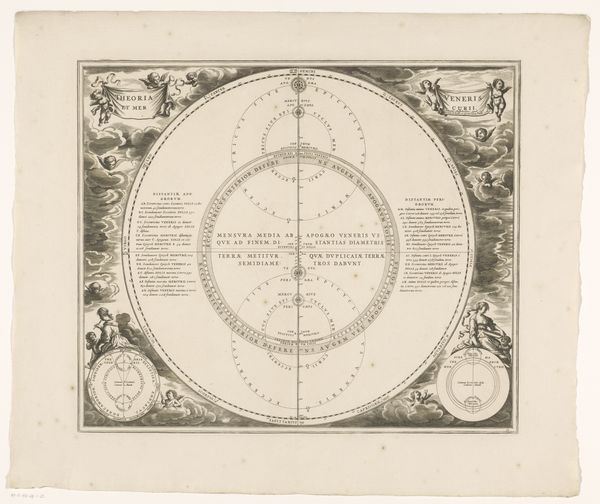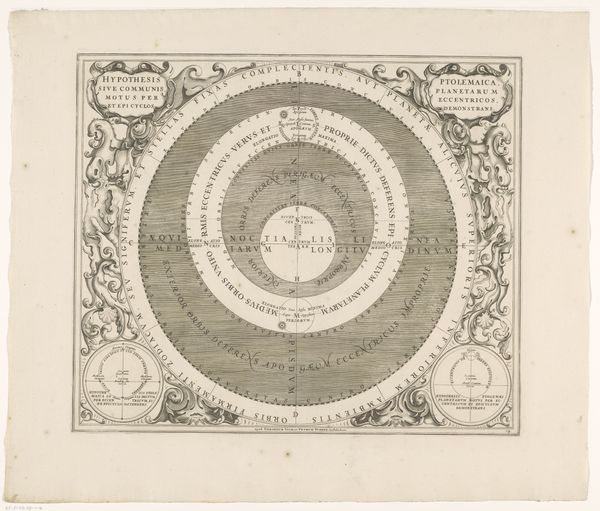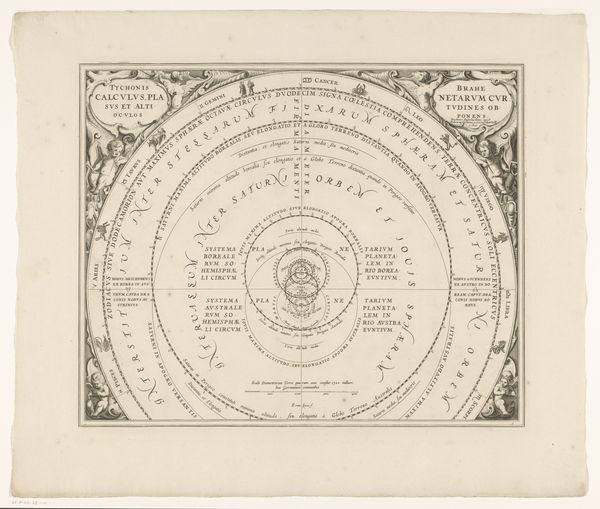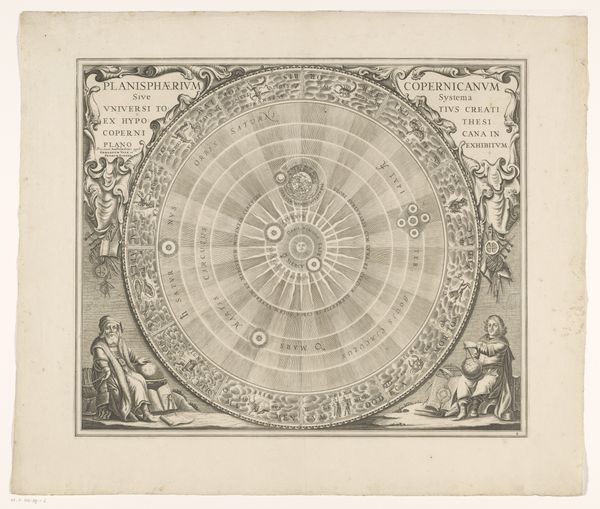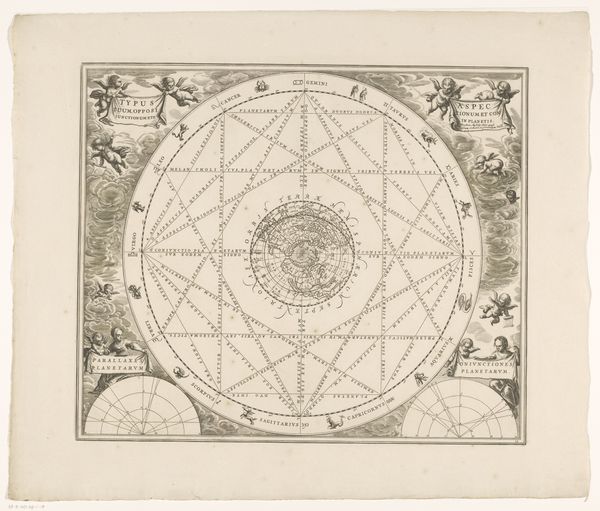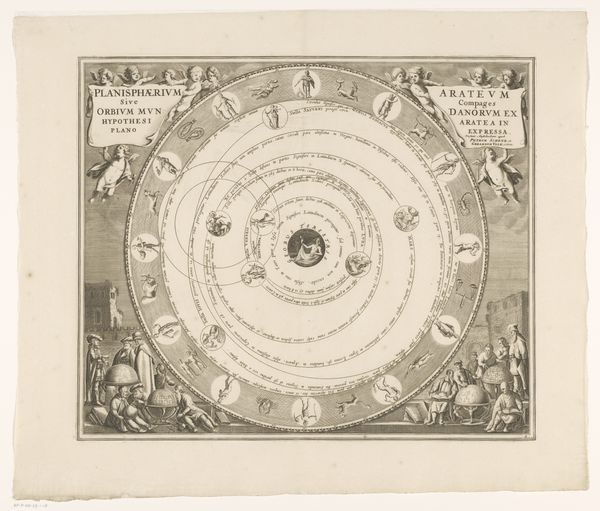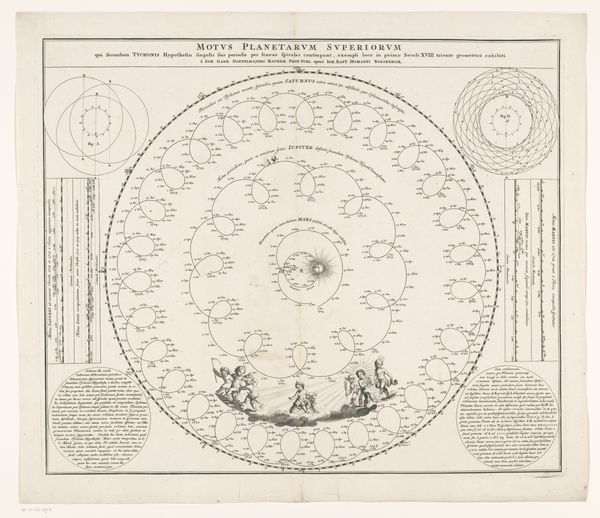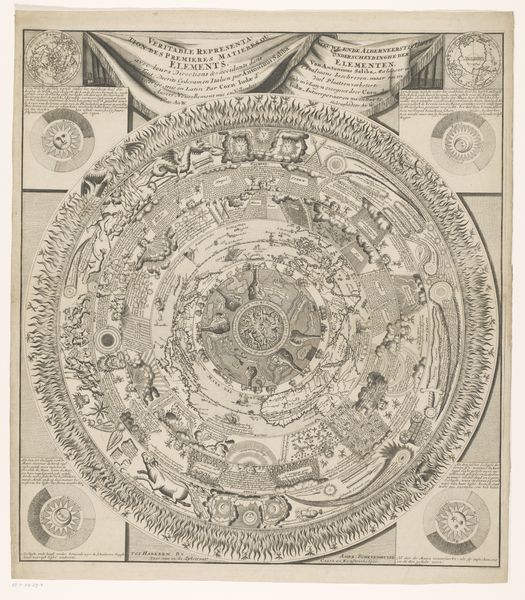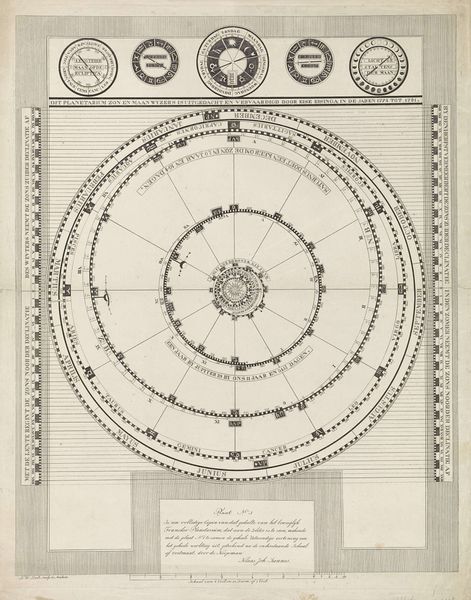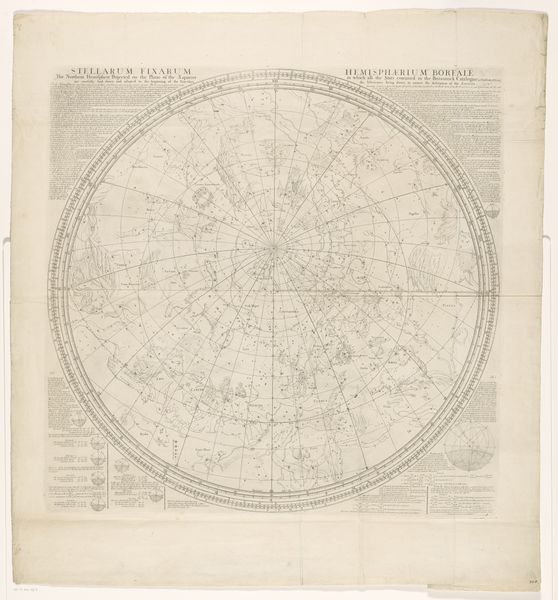
print, paper, engraving
#
baroque
# print
#
paper
#
geometric
#
line
#
history-painting
#
engraving
Dimensions: height 435 mm, width 515 mm
Copyright: Rijks Museum: Open Domain
This celestial map, conceived by Johannes van Loon in the 17th century, attempts to chart the heavens with both scientific and allegorical intent. The diagram's geometric precision, illustrating epicycles—the circular paths within circles thought to explain planetary movement—is striking. Yet, the floating putti surrounding the central sphere evoke a sense of divine order, reminiscent of cherubic figures found in Renaissance religious paintings. These figures, often symbols of innocence and celestial guidance, suggest a connection between scientific inquiry and spiritual understanding. Consider the recurring motif of the circle itself, central here and in countless mandalas and cosmological diagrams across cultures. It represents not only a geometrical shape but, subconsciously, totality and the cyclical nature of existence. The image engages us with a profound, if unconscious, understanding of the cosmos, blending reason with the timeless human quest to find our place in the universe. The image reminds us of the enduring, cyclical journey of symbols across time, as we continue to look to the stars for meaning.
Comments
No comments
Be the first to comment and join the conversation on the ultimate creative platform.

